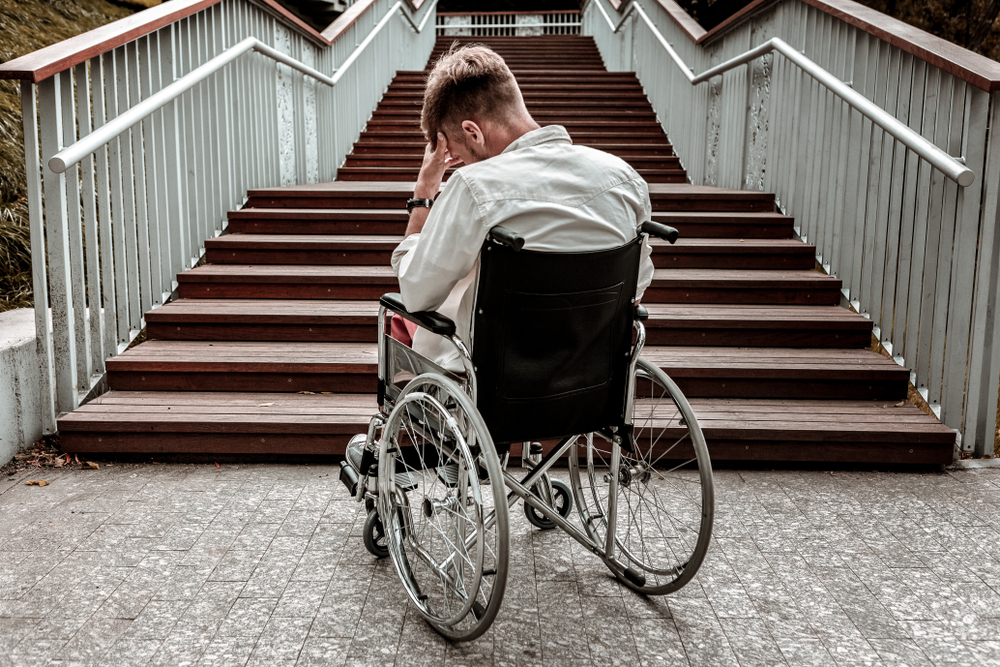
The Most Common Issues for People with Impairments
Life’s tough. For those who live with disabilities, life can be tougher. Sometimes it can be difficult to envision how everyday situations and interactions can be even more complicated for people who live with low or no vision. Here are a few of the most common issues that people with impairments deal with on a daily basis.
Social Issues
For some with visible disabilities, rude and inappropriate interactions can happen. Conversely, rather than viewing people with disabilities as human, society often sees them as incapable or inspirational, not just real, ordinary people. All of these realities complicate social interactions.
Social Logistics
While some venues offer assistance for people with disabilities, many don’t provide seating options for large groups of people, forcing a person who uses a wheelchair to split from the group. Alternatively, some might be hesitant to invite someone with disabilities to specific events for fear they will not be able to engage fully.
Economic Problems
As adults, people with additional challenges may struggle to find permanent employment. With limited career options, they may not have access to medical care, food, and other basic needs. While the federal and state governments provide specific programs to assist people with disabilities, this is not enough to keep people with these challenges out of poverty. Researchers from the University of California found that poverty rates among individuals with disabilities are almost double that of those who do not have impairments.
Workplace Issues
Legally, most workplaces must be accessible to people with disabilities, whether that means the addition of ramps, wider doorways, or dome-tiled stairways. Yet the workplace is another area where people are often judged by their disability rather than their qualifications, experience, and expertise. Employment discrimination against a qualified candidate due to a disability is illegal. By law, workplaces must accommodate employees with disabilities and not subject them to harassment. Yet, this is not always enough to keep it from happening.
Racism
According to Census data, people of color are more likely to deal with a disability than white people. A number of factors contribute to this, including environmental racism, occupational segregation, and health care disparities. Due to racism, people of color are more likely to be injured on the job and less likely to receive preventative health care for certain conditions that become can disabling.
Safety Problems
People with disabilities are vulnerable to abuse and manipulation. For example, the National Crime Victimization Survey discovered that people with disabilities experience more sexual violence than those who are not impaired. While people with disabilities already tend to be targeted, those with caregivers may be subject to harassment and abuse by these individuals.
Transportation Troubles
People with limited abilities can struggle to find transportation services or public transportation in cities, suburbs, or in rural areas. In some cases, individuals are unaware of their public transportation options. In others, there is a lack of resources and services. Cities and towns need to come up with better ways to make independent living more accessible to their community that manage disabilities.
Voting Rights
Making voting accessible for people with impairments is another challenge. While individuals with disabilities may be allowed to vote, they could have trouble physically accessing the poll or using the voting machines. Stricter photo ID laws add another challenge. According to Pew Charitable Foundation’s Elections Performance Index, people with disabilities are less likely to have photo identification, which only increases barriers to vote.
Independent Living Challenges
For most Americans, the goal is to be able to live independently at a certain age. Many people with disabilities are dependent on others for care, and living independently may not be an option. However, those who can live alone also need to be prepared for severe weather issues and unexpected emergencies by having a backup plan. After all, if a caretaker can’t make it to someone who lives alone with disabilities, it could be deadly. People who live with disabilities manage many problems throughout their lifetime. We need to do a better job of understanding and caring for our friends and family with these types of challenges. Empathy and kindness go a long way, as does innovative solutions to common problems that people with disabilities face. At StrongGo, we believe in creating a world that’s accessible to people with disabilities. If you need help determining how to make your office building or parking lot more accessible, reach out to us today at CSD@stronggo.com.


